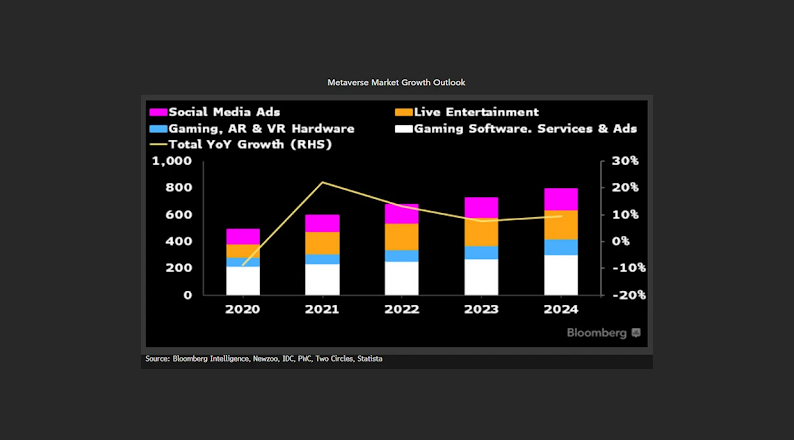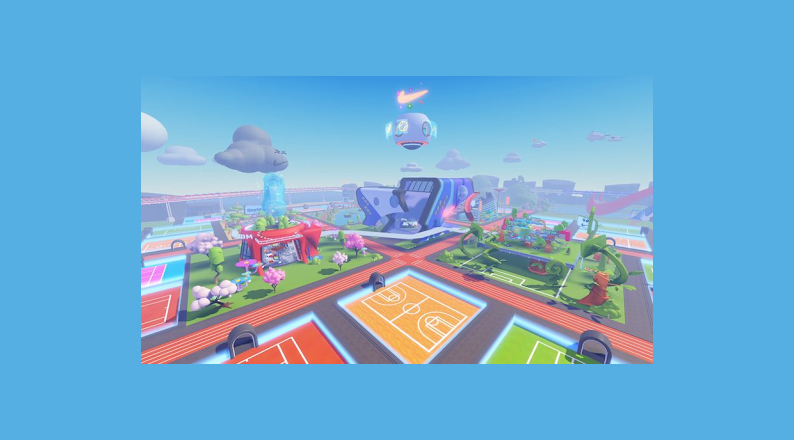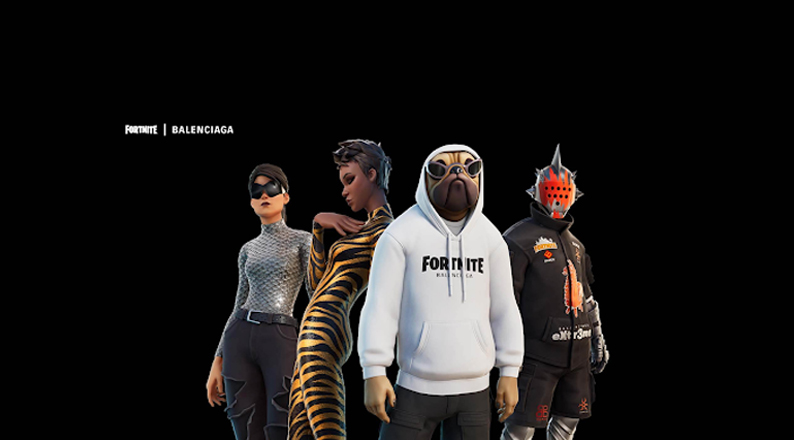Table of Contents
Over the past ten years, the retail business has undergone numerous transformations, transitioning from brick and mortar retail to e-commerce and social commerce and now into the digital world.
With the news that Facebook will change its name from “Facebook” to “Meta” in October 2021, the world is buzzing with terms like Non-Fungible Token (NFT), Metaverse, Web 3.0, and Virtual Autonomy that have never before entered our lexicon.
Yet these phrases are linked to some of the essential technological ideas from the previous five years. With these phrases in their taglines, new tech businesses have received billions of dollars thanks to the excitement.
Are customers prepared to purchase the Metaverse with new tech companies backed by vast amounts of money and outfitted with the newest insider knowledge?
One of the core components of metaverse platforms is the ability to buy, sell, and trade assets. Consumers spend hundreds on virtual collectibles and clothes.
Even physical stores are utilizing metaverse technologies. Dozens of retail firms use Virtual Reality (VR) and augmented Reality (AR) in their products worldwide.
In this article, we will get into Metaverse and Metaverse shopping as well as how this will impact the shopping experience but first, let us have an introduction to the Metaverse.
Introduction to the Metaverse
Knowing the Metaverse itself is crucial in preparing customers for Metaverse purchasing. The word “Metaverse” is now used to refer to a worldwide online experience that cogently combines Web 2.0, Augmented Reality, and Virtual Reality.
Millions of people may already be seen, communicated with, and even played games within a range of great multi-player interactive games. One of these is VR Chat, which comes the nearest to a real-world Metaverse as a way to communicate.
The goal is to develop a virtual environment that resembles the internet but allows users to move around and engage in real-time communication.
People can purchase and construct assets exclusive to the Metaverse and have an actual monetary value.
These assets, which come from NFTs (Non-Fungible Tokens) and are purchased using cryptocurrencies, may include real estate, works of art, apparel, and other goods.
Because it would combine both channels, the Metaverse is anticipated to eliminate the barrier between real physical shopping and online purchasing for the retail sector.
The introduction to Metaverse will allow customers to experience physical shopping in the luxury of their homes.
Given that the metaverse is still in its infancy, understanding it is challenging. However, we can see that the metaverse trend is developing in the tech industry, with a market opportunity expected to reach $800 billion by 2024.

Metaverse Market Growth – Image Source: Bloomberg
Metaverse and Metaverse Shopping
The planet has been completely swept up in the Metaverse. Major brands and businesses are scrambling to capitalize on the introduction to the metaverse by developing unique consumer experiences in this new setting.
The retail sector is predicted to change thanks to the Metaverse. Below are ways in which metaverse and metaverse shopping will change shopping experiences for both customers and brands;
1. New Shopping Experience
One of the most intriguing possibilities will be the ability to shop in the Metaverse. Because of this, many fashion companies are looking for methods to participate in Metaverse’s mission to provide more comprehensive, engaging, and real-time experiences.
With the help of AI technology, Metaverse and Metaverse shopping may track a customer’s activity, purchase history, taste, and demographic profile and utilize this information to make fresh, more tailored clothing recommendations and drive purchases.
Complete accessibility will be possible thanks to online shopping that transcends place and time.
Customers can browse virtual stores, try on garments in a 3D fitting room, and even obtain a 360-degree perspective of what different outfits look like on a person.
Shoppers can even purchase a new vehicle while enjoying an exhilarating test drive, receive personal beauty advice, and try on jewelry, eyewear, and makeup to see how the items feel and look.
2. Virtual Reality
A virtual shopping experience blends the ease of online buying with the real-world retail experience.
According to research, approximately 85% of people around the globe shop online. Customers may still buy from the convenience of their homes using VR while still getting individualized attention, social connection, and an immersive experience.
With VR technology, businesses can present their goods in a virtual setting where customers from all over the world may interact with them and try on outfits in a virtual changing room or furniture in a VR showroom.
Customers may also run into virtual influencers when making purchases, which is a fantastic marketing tactic for metaverse brands.
To provide a customized shopping experience, store employees can converse with clients via video, chat, and audio in the Metaverse.
Avatars can now participate in the virtual shopping experience and add to the individualized feel thanks to the introduction to metaverse technology.
Alo Sanctuary is one example of how major companies are delving deeper into the metaverse, or virtual worlds where individuals can work, play, and interact.

Alo Metaverse Experience – Image Source: Aloyoga
3. Augmented Reality
Users can view things in the real world before purchasing using AR shopping.
For instance, beauty companies utilize Augmented Reality to let customers try on various palettes before making a purchase, which is especially useful for online interactions because customers can’t physically see the colors.
Another example of AR shopping is trying on clothing, accessories, jewelry, or cosmetics before purchasing them.
Users can access product information, activities, and interactive experiences by scanning QR codes or other digital components on the packaging.
AR can improve the metaverse and metaverse shopping experience by integrating digital components into real-world establishments.
Nike has started combining augmented Reality (AR) components into momentary experiences within specific stores.
One Nike shop event reproduced Oregon’s Smith Rock State Park with the aid of geofencing, Augmented Reality, and their mobile app. While experiencing the store, visitors might participate in activities and explore the surroundings.
4. Shopping With AI Avatars
Have you ever designed your virtual persona to represent yourself? Without the 3D digital avatars that will employ artificial intelligence to recreate real-world human features and actions in the metaverse realm, the virtual shopping experience wouldn’t be as thrilling.
Digital avatars can be personalized in any way to seem like their owners, whether through clothing, hairstyles, or other features. This feature is one of their most excellent features.
You may purchase items for your virtual avatar, dress it up, and add customizations to make it look more like you.
Since there are currently companies that design digital clothing to be worn only by avatars in the Metaverse, the metaverse and metaverse shopping opens up new possibilities for digital fashion.
As they will reflect our personalities and represent who we are in the virtual world, AI-powered avatars will play a significant role in the metaverse experience.
Avatars will make shopping easier with friends and salespeople who can guide you through the virtual store, offer suggestions, and help with the sale.
Using your digital avatar, you can browse a store’s offerings and choose the products you want to buy. Our ability to rapidly switch between several virtual worlds will be made possible by the introduction to the Metaverse, an emerging digital environment.
With Rec Room, one can dress up and style avatars how they desire. Shoppers can try on and purchase costumes, household equipment, plushies, and other digital goods to jazz up their avatars or adorn their dorm rooms in the virtual outdoor shopping center.

Rec Room Avatars – Image Source: Rec Room
5. New Virtual Clothes Creation
Artificial intelligence in VR will provide much richer experiences in addition to the growing interest in virtual clothing.
The potential of AI technology will allow for the creation of virtual closets where users may store their current clothing and receive fresh, more individualized outfit suggestions.
Similarly, AI store assistants can comprehend and pick up on your buying preferences to offer personalized style advice based on your past purchases.
As AI technologies advance, they will boost creativity and offer the metaverse never-before-seen purchasing experiences.
Outfit generator apps will evolve due to the expanding digital fashion trend, opening up a new marketplace for metaverse fashion designers to explore.
AI-based outfit generating systems will produce distinctively designed virtual garments distinct from those in the real world. Individuals in the Metaverse would be introduced to new fashion ideas due to AI algorithms becoming more inventive in creating new digital ensembles.
6. Personalization
Conversely, e-commerce personalization typically results in discounts and product recommendations.
By bringing natural objects into virtual worlds, retailers can give their customers highly customized purchasing experiences.
Online stores can now interact with their clients by challenging their imaginations with ideas impractical to carry out in the real world, thanks to the creation of metaverses.
Numerous studies show how crucial it is to handle clients with a personalized strategy and avoid seeing them as numbers.
Brands may expose their customers to fun and highly customized digital experiences thanks to the introduction to the metaverse. Shoppers can better understand the desired goods by utilizing AR and VR solutions.
They can delve deeper into its intricacies, view it from various perspectives, rotate and enlarge it, read user reviews, and request usage guidance.
The Metaverse has the power to alter how people purchase in a variety of ways fundamentally.
The entry of Nike into the Metaverse is a superb illustration of this. By giving customers more customization, the sportswear brand will forge more robust and vibrant links with the communities.
Recently released on the gaming platform Roblox is Nikeland, an immersive environment where members of the Nike community can play games and even create their games using the Nikeland toolbox.

Nikeland on Roblox – Image Source: CNBC
7. New Sales Channel
Brands can now sell virtual and physical goods on the same platform, thanks to the Metaverse. This practice transforms the face of online retail and opens up many new business opportunities.
For instance, it makes it possible for businesses to directly sell virtual goods to clients inside a virtual setting, doing away with supply chain management.
Retailers can enter the market directly with the help of direct-to-consumer sales. Additionally, brands can showcase actual products before physically selling them to customers. In this example, the customer’s trip starts in the virtual world and ends in the physical one.
Shoppers can figure out precisely what they’re looking for thanks to the introduction to the metaverse, which also offers an immersive shopping experience that will make the whole process more fun and exciting.
Along with making the metaverse and metaverse shopping more enjoyable and informative, it will help customers feel confident about the fit or quality of a product.
As a result, customers are more inclined to keep utilizing the merchant’s services. Additionally, they will entice them to shop online by recommending the merchant to their family and colleagues.
Shopping isn’t just for digital items. The science underpinning devices like hair dryers, curling irons, and straighteners (all things consumers can buy) was highlighted by an app that Dyson released last year.

Dyson Shop in the Metaverse – Image Source: Dyson
8. Integrated Shopping Experiences With Gaming
The level of metaverse retail dramatically rises at this point. Here’s how commerce and gaming merge. Please bear with us as we need a little imagination for this section.
Imagine that an avatar that resembles you has been created for you after being beamed into a virtual 3D world.
You’ve just stepped foot in this realm, such as Decentraland, which exactly resembles the real one. Restaurants, sports stadiums, billboards with advertisements, and (most importantly for merchants) brand flagship stores are all present.
You now do an exploration. You have the option to transition between several brand worlds quickly – one-minute playing hoops in Nike’s arena, the next browsing racks of Ganni fashions.
Here is how it seems in real life. Fortnite and Balenciaga have collaborated. With the help of a partnership between Balenciaga and the online game developer Fortnite, you can now dress your Fortnite avatars in Balenciaga skins.
You can buy them within the game, making you the (albeit imaginary) owner of exclusive Balenciaga skins.
You will be taken to the Balenciaga online store if you wish to purchase the actual line. In other words, you’re compelled to abandon the game to make a purchase elsewhere, and you might not return.

Fortnite X Balenciaga – Image Source: Epic Games
Brands Leveraging Metaverse and Metaverse Shopping
As the world becomes more digital, brands must concentrate on developing emotionally engaging retail experiences. This practice involves using sight and sound to make a place feel as authentic as possible in the metaverse and metaverse shopping.
It also entails thinking of cunning ways to incorporate taste, touch, and feel into the metaverse buying experience. Although this may initially appear like a challenging endeavor, it is nothing that hasn’t been accomplished in the actual world.
Below are some of the brands that have already started leveraging the metaverse and metaverse shopping;
1. Gucci
With the help of the virtual artist, a new line of CryptoJunky NFTs and ceramic sculptures called Supergucci was produced. The project, which houses the brand’s metaverse efforts, will fit in the Gucci Vault. The Sandbox, Gucci also bought a property plot on the online real estate market.

Gucci Store on Sandbox- Image Source: Insider
2. Jordan
The well-liked gaming platform has reestablished contact with the company to launch new virtual apparel and Jumpman Zone, engaging activity in Fornite’s Creative Mode.
To find Air Jordan 11 “Cool Grey” artifacts, take on Trickshot Challenges, and access MVP regions with Jumpman-inspired graphics, gamers can go on a treasure hunt.

Fortnite’s New Jumpman Zone – Image Source: GQ
3. Coca-Cola
The Coca-Cola Company entered the metaverse in 2021 when it created its first NFT and worked with Decentraland.
In April 2022, Coca-Cola launched its virtual fizzy pop beverage, influenced by video games, in the introduction to the metaverse before it was available on grocery shelves in the real world.

Coca-Cola Virtual Drink – Image Source: New York Post
4. Selfridges
The renowned, upscale British retailer Selfridges partnered with Charli Cohen, the creator of NEXTWEAR, which creates “limited amounts of physical apparel” in Shanghai and the UK.
For use in video games and the Metaverse, the company also produces digital copies of its products.
To commemorate 25 years of Pokemon, they built a virtual city alongside Selfridges and Yahoo RYOT Lab. Shoppers can purchase tangible and digital items, including four digital outfits for Snapchat lenses.
5. Zara
To join the South Korean Metaverse known as Zepeto, the global fast-fashion retailer Zara announced a partnership with the apparel line Ader Error.
The cooperation will lead to the creation of the AZ Collection, which will be marketed to the Metaverse and the real world.
Conclusion
For better or worse, the introduction to the metaverse will include engaging activities like virtual shopping, digital avatars, and outfit-generating apps.
What is in store for the shopping experience in the Metaverse? It’s still uncertain if we can go into virtual stores, use our digital avatars to buy items, and get style advice from AI sales assistants in a different realm.
The metaverse and metaverse shopping is still a long way off.
However, we anticipate that the Metaverse’s new era will bring up opportunities already being adopted by AI and cutting-edge technologies to improve the shopping experience and progress the implementation of the metaverse idea in general.
The introduction to the metaverse movement has been highly successful in the virtual retail space, even in its brief duration.
The rapidly developing realm of augmented and virtual reality purchasing can include your business. You may establish your brand in the Metaverse whether you work with a metaverse platform to sell NFTs or use VR and AR to improve your current retail environment.
Acowebs are developers of Woocommerce bulk discounts that will help you add bulk discounts to products on your stores. It also has developed various other plugins like the popular plugin for managing the checkout form fields in WooCommerce, called Woocommerce Checkout Manager, which is highly feature-oriented yet lightweight and fast. There is also a free version of this plugin available in the WordPress directory named WooCommerce Checkout Field Editor.











 Login
Login
 Cart
Cart








